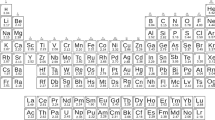Abstract
DESPITE numerous studies of the infra-red spectroscopic changes which accompany interaction of an X–H group with a proton acceptor, no simple rule has been proposed relating the frequency shift Δv of the X–H fundamental to the nature of particular proton donors and acceptors. In recent studies involving the interaction of indole, pyrrole, N-methyl acetamide, diphenylamine and N-methyl aniline with a variety of compounds in carbon tetrachloride it became evident that the frequency shift could be expressed by a simple product rule:  where D and A are constants characterizing the donor and acceptor, respectively, and Δv covers a range from 30 to 300 cm−1. For this purpose a value was arbitrarily assigned to one donor, indole, and all constants related to this standard.
where D and A are constants characterizing the donor and acceptor, respectively, and Δv covers a range from 30 to 300 cm−1. For this purpose a value was arbitrarily assigned to one donor, indole, and all constants related to this standard.
This is a preview of subscription content, access via your institution
Access options
Subscribe to this journal
Receive 51 print issues and online access
$199.00 per year
only $3.90 per issue
Buy this article
- Purchase on Springer Link
- Instant access to full article PDF
Prices may be subject to local taxes which are calculated during checkout
Similar content being viewed by others
References
Becker, E. D., Spectrochimica Acta, 17, 436 (1961).
Author information
Authors and Affiliations
Rights and permissions
About this article
Cite this article
PULLIN, J., WERNER, R. A Product Rule for X–H Frequency Shifts. Nature 206, 393–394 (1965). https://doi.org/10.1038/206393a0
Published:
Issue Date:
DOI: https://doi.org/10.1038/206393a0
Comments
By submitting a comment you agree to abide by our Terms and Community Guidelines. If you find something abusive or that does not comply with our terms or guidelines please flag it as inappropriate.



